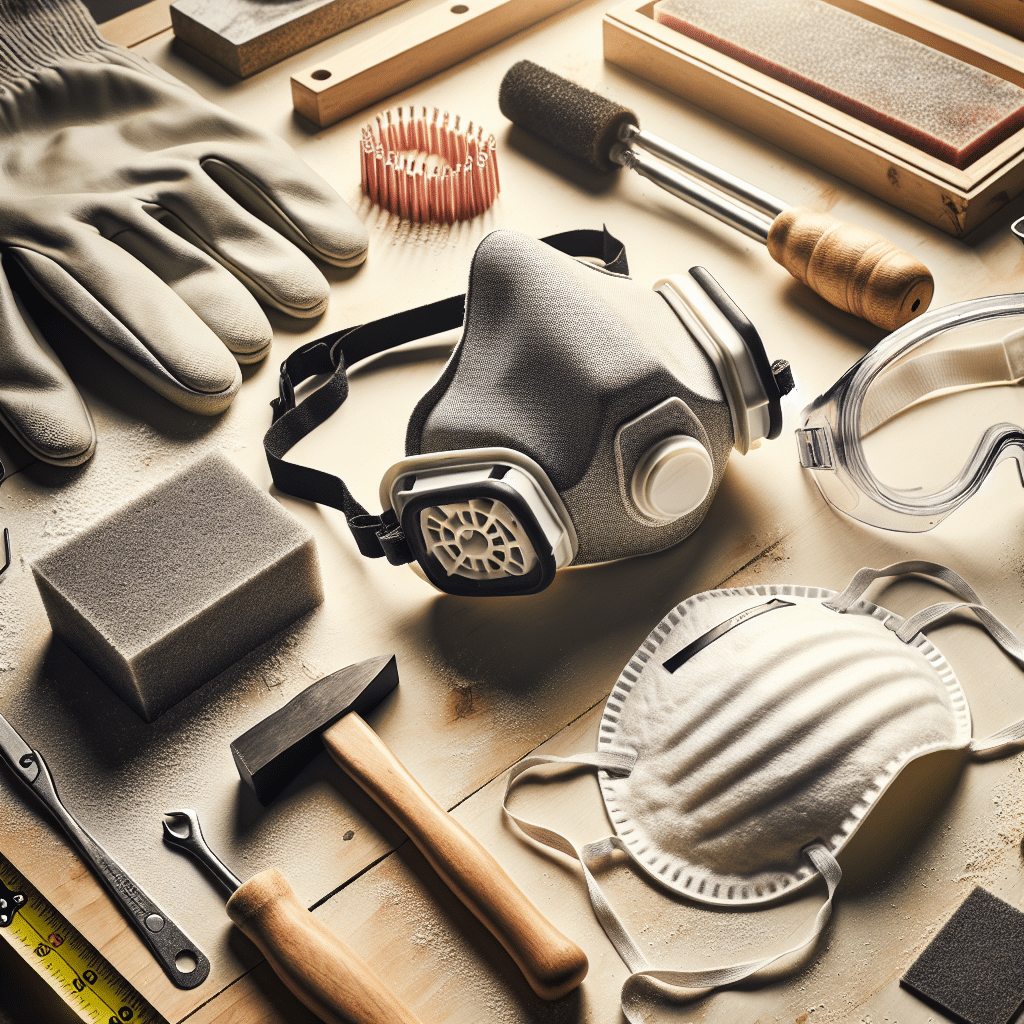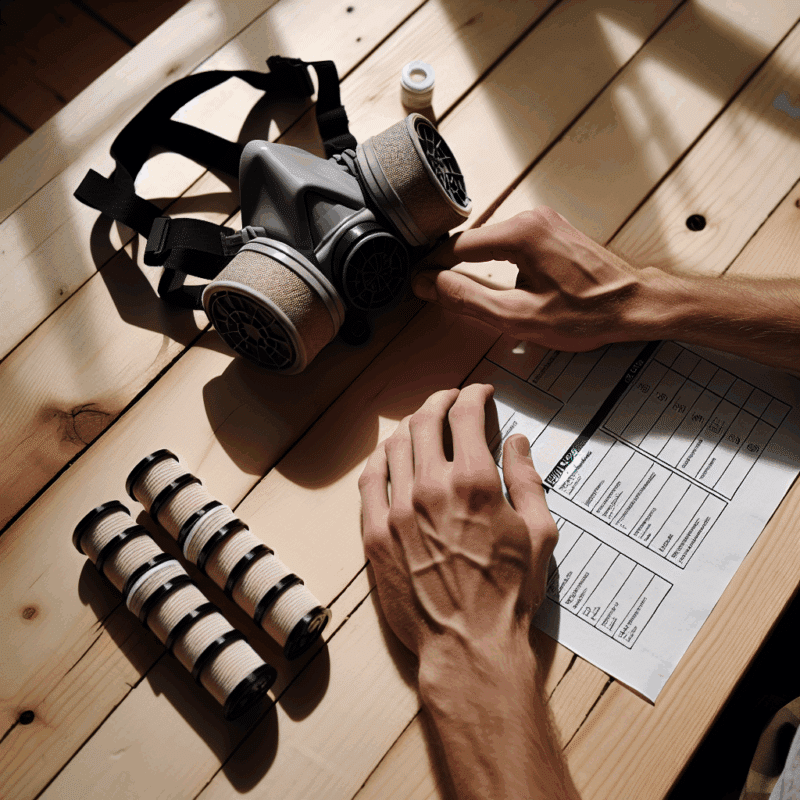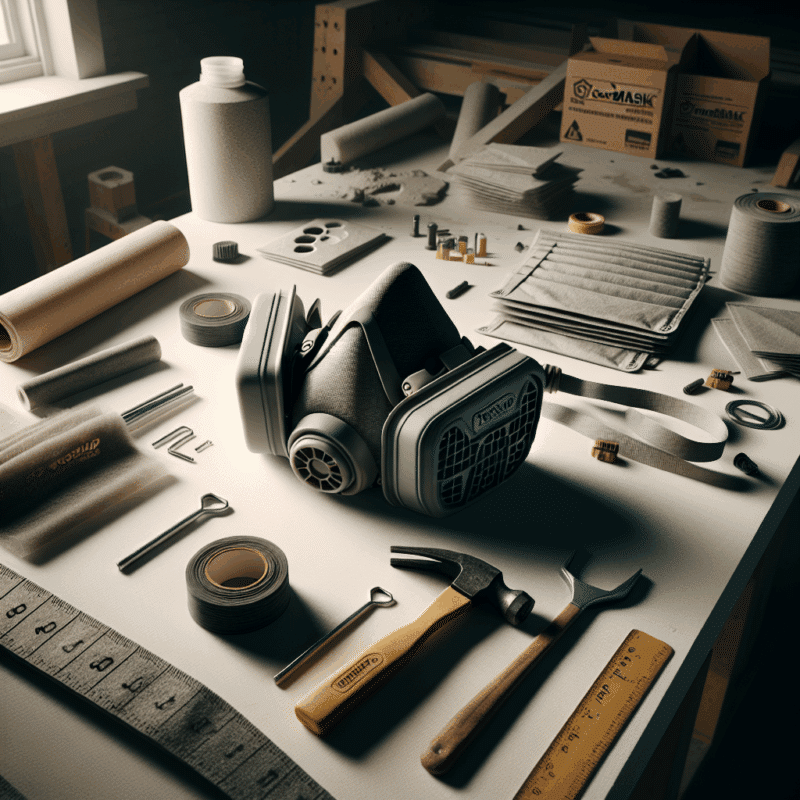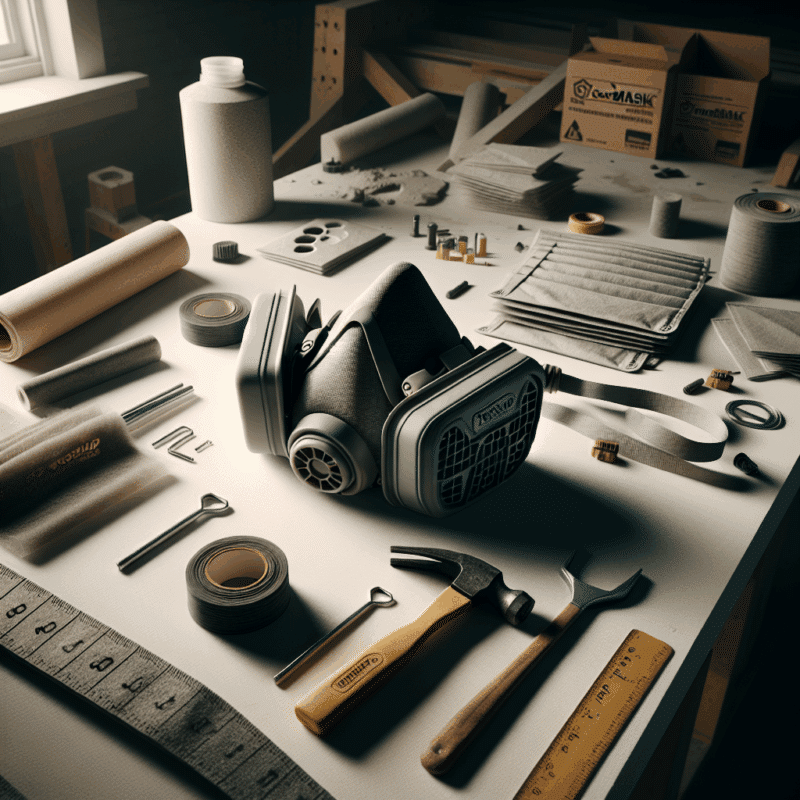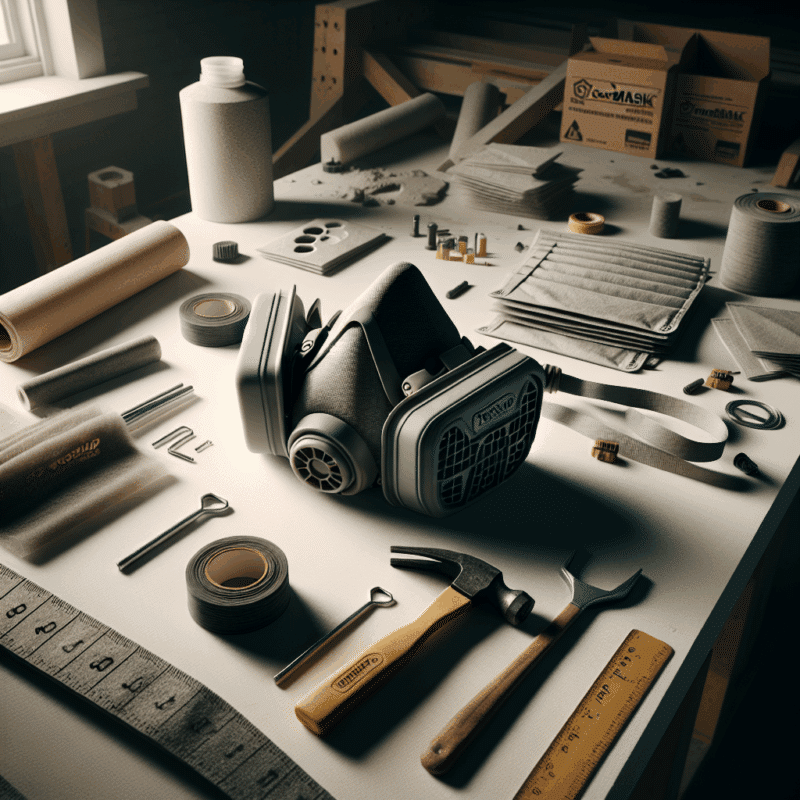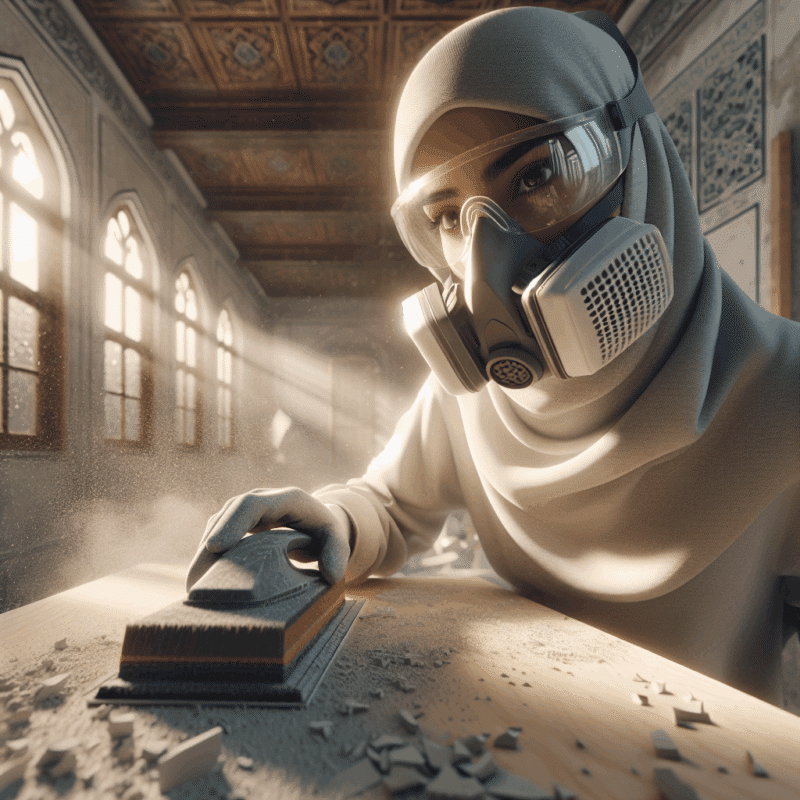Quick Pre-Job Mask Checklist for DIYers & UK Trades
In This Article
- Always inspect your mask and filters before use.
- Conduct a fit test—don’t rely on assumption.
- Use the correct filter for the specific job task.
- Pair your mask with complementary PPE.
- Download and keep a checklist for daily use.
- Don’t reuse disposable masks; replace when needed.
- Consult Read a related article for in-depth respirator training tips.
Why a Pre-Job Mask Checklist Matters
Protecting DIYers and Trades in Dusty Environments
Before beginning any construction, demolition, painting, or carpentry task, running through a detailed pre-job mask checklist is not just recommended—it’s critical. Whether you’re a weekend DIY warrior or a seasoned tradesperson, ensuring your mask is properly fitted and primed for the job can prevent exposure to harmful airborne contaminants such as silica dust, fibreglass, paint fumes, or wood particles. These hazards are often invisible yet carry long-term respiratory risks if inhaled regularly.
Many underestimate the importance of personal protective equipment (PPE), especially in domestic settings. Nonetheless, accurate use of a dust mask or respirator, verified with a reliable pre-job mask checklist, drastically enhances your protection. It’s not just about owning the gear—it’s about using it correctly every single time.
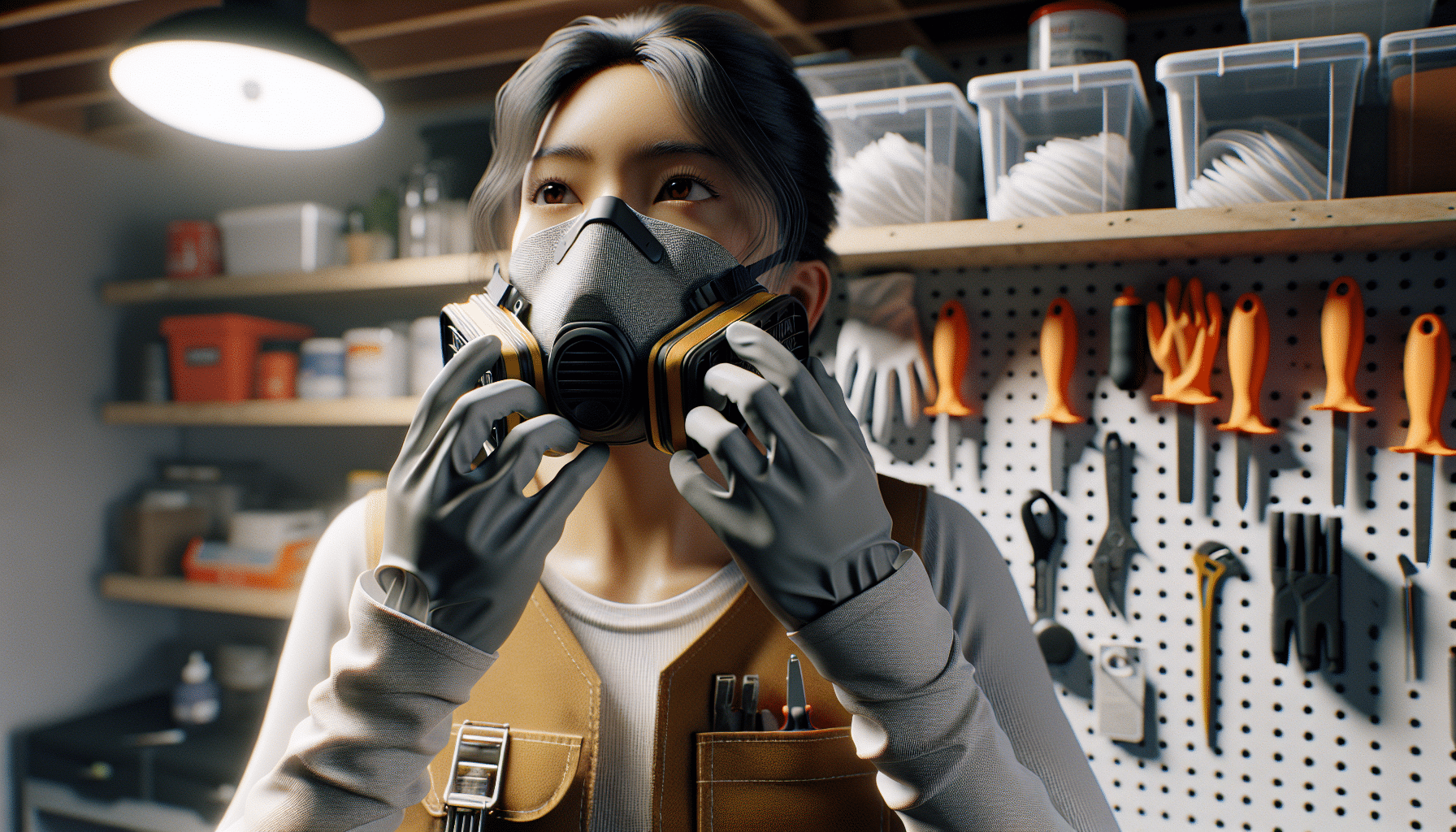
Step 1: Inspect Mask & Filters
Look for Wear, Damage, or Expired Elements
The first step in a thorough pre-job mask checklist is to inspect your mask and filter components. Over time and with repeated use, dust masks can suffer degradation in material quality, loss in filtration efficiency, and structural issues like cracked seals or torn straps. Check both reusable and disposable masks for visible signs of wear such as discolouration, brittleness, or distortion of the nose bridge.
Pay special attention to the filters. These sometimes degrade even without visible signs, especially when exposed to humidity or stored improperly. Always check the expiration date printed on filter cartridges or boxes. HEPA and P100 filters must be replaced periodically to ensure they can trap hazardous particulates effectively.
“If your mask isn’t in top condition before you begin, it won’t provide the protection you need during the job.”
Step 2: Perform a Quick Fit Test
Prevent Air Leaks with the Inhale Method
Your mask’s seal is only as good as its fit. Therefore, no pre-job mask checklist is complete without a quick fit test. This test involves placing the mask on your face, securing the straps snugly, then inhaling sharply to create a vacuum inside the mask. If the mask collapses slightly towards your face and no air leaks are detected around the edges, you’ve achieved a good seal.
If you feel a draft around your nose, cheeks, or chin, readjust the straps and the mask’s position, especially around the bridge of the nose. Even the best mask will fail if it doesn’t seal properly, allowing dust and fumes to bypass filters and enter your lungs. This step is often skipped due to time constraints, but it’s arguably the most critical for effective PPE usage.
Step 3: Check Strap Placement
Ensure Even Tension and Snug Fit
Incorrect strap positioning reduces the effectiveness of your respiratory protection. As you proceed through your pre-job mask checklist, confirm both the top and bottom straps sit correctly—usually one above the ears and the other below. Both should apply even tension around the face to prevent slippage or gaps.
Jerky movements or frequent repositioning during tasks can loosen your mask as well. If you find yourself adjusting the mask mid-job, it’s likely the straps weren’t fitted tightly enough from the outset. A few extra seconds spent achieving a proper contact seal could save years of respiratory distress.
Step 4: Confirm the Right Filter is Inserted
Match Filter Type to Job Task
This step in the pre-job mask checklist is often overlooked, with DIYers assuming one filter fits all. However, filters are task-specific. A P2 or P3 filter is suited for general dust, while ABEK filters target gases and vapours from chemicals or paints. If you’re working with solvents, adhesives, or synthetic coatings, a basic particulate filter won’t offer adequate protection.
Always consult the manufacturer’s guidance on filter compatibility. In many UK workshop and construction environments, dual combination filters are ideal as they provide both particulate and vapour protection. Never mix and match incompatible filters, and respect the shelf life markers on each product.
Step 5: Assemble PPE Essentials
Goggles, Gloves, and Respirators Together
A mask alone doesn’t qualify as complete protection. Complement your pre-job mask checklist with other essential PPE elements such as anti-fog safety goggles, durable gloves, and an effective hearing protector when needed. Dust and debris can irritate the eyes, and many tasks involve materials that can cause skin reactions.
PPE should function as a system. Ensure your safety goggles don’t interfere with your mask seal, and select gloves that allow dexterity while protecting your skin. In some cases, a face shield may also be warranted. Bundling gear effectively optimises safety and boosts worksite efficiency.
When to Replace Your Dust Mask
Signs It’s Time to Upgrade
Every responsible pre-job mask checklist should end with an overview of when to upgrade or replace your respirator. Replace disposable masks after heavy use or when breathing becomes difficult, indicating clogging. Reusable respirators require cartridge changes according to the manufacturer’s schedule—but heavy usage may accelerate this.
Signs that indicate replacement include odours penetrating the mask, the presence of moisture on the inner surface, loose straps, or cracked seals. Furthermore, if you’ve recently undergone renovations in your work area, environmental shifts like increased humidity could affect the lifespan of PPE components.
FAQ: Pre-Use Respirator Safety
Common Questions from UK DIY and Trade Users
Do I need a pre-job mask checklist even for light sanding?
Yes. Even minor tasks can release significant particulate matter. A proper mask and fit check reduce long-term exposure risk.
How often should filters be changed?
Always follow the manufacturer’s guidance. Typically, disposable filters last about 8 hours of use, while more advanced cartridges may go longer but need regular inspections.
Can I clean and reuse a disposable mask?
No. Disposable masks are single-use for a reason; compromising their structure can reduce efficacy dramatically. Use a reusable respirator instead.
Where can I learn more about proper respirator maintenance?
Refer to UK safety checklist for effective mask use for updated UK Health & Safety Executive (HSE) guidance, or consult your employer’s safety resources.
Printable Checklist Download
Your Toolbox-Ready PPE Reminder
Streamline your safety routine by downloading our free printable pre-job mask checklist. Perfect for laminating and keeping in your shed, van, or toolbox, this one-pager guides you through inspections, fittings, and PPE coordination in seconds. Make it part of your daily habit and ensure you never miss a critical safety step before starting work.
Get it now via Learn more about Dust mask safety and compliance for DIY and trades or download a mobile-friendly version through Upcoming EU safety standards for PPE products.
Conclusion: Don’t Skip the Basics
Disregarding your pre-job mask checklist is not worth the risk. Decades of occupational health research in the UK confirm what most seasoned professionals learn the hard way: consistent, correctly fitted respiratory protection prevents chronic illness. Minor shortcuts today could lead to major health problems tomorrow.
Establish this routine whether you’re sanding a door or demolishing a chimney. It’s a critical part of professional pride and personal safety.
Great guide on quick-pre-job-mask-checklist-uk-diy-trades – Community Feedback
What should I check before wearing a dust mask for DIY?
Check the mask seal, ensure correct filter fitted, adjust straps for a snug fit, and verify the mask is undamaged. Perform a quick fit test before every job.
How do I perform a simple mask fit test at home?
Cover the mask with your hands and inhale. If you feel air leaks or the mask collapses, adjust the fit and straps until secure. Always follow manufacturer instructions.
Do reusable dust masks need pre-job checks like disposables?
Yes, reusable masks require checks for filter condition, seal integrity, and correct assembly before each use, just like disposable masks, to ensure effective protection.

